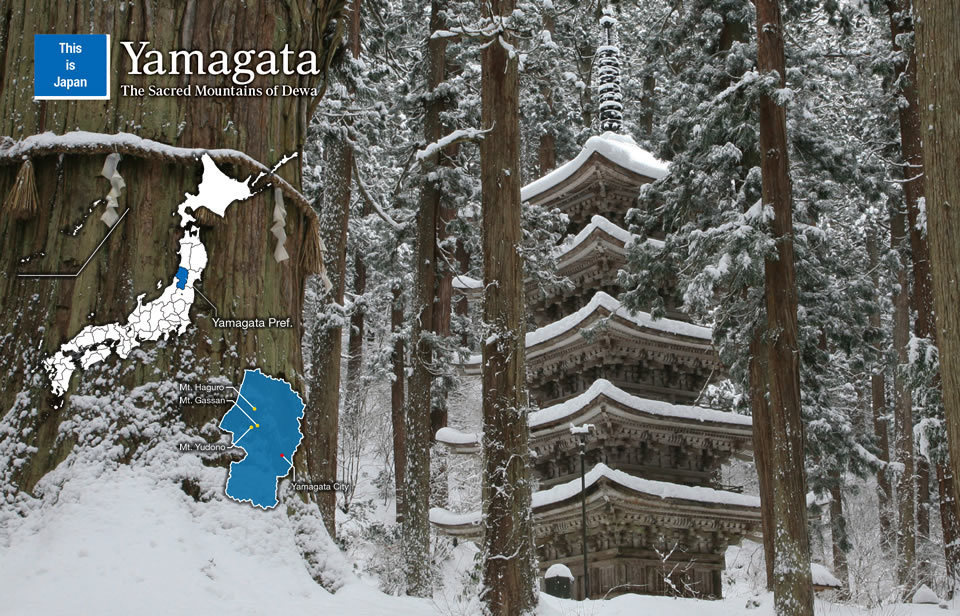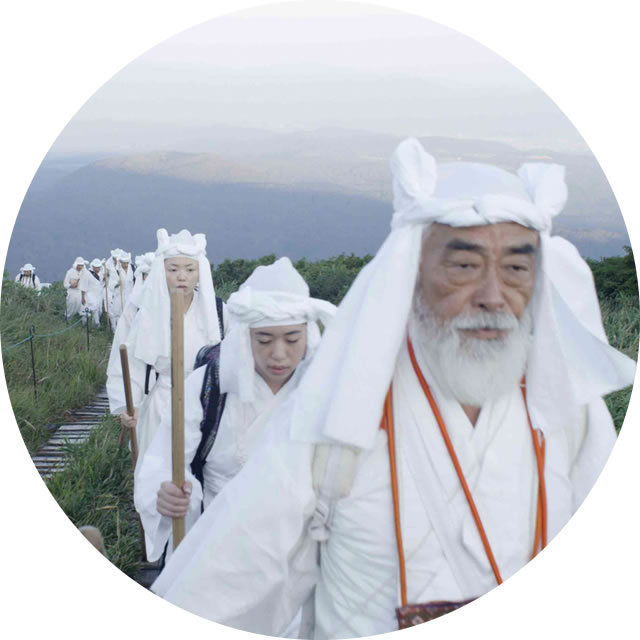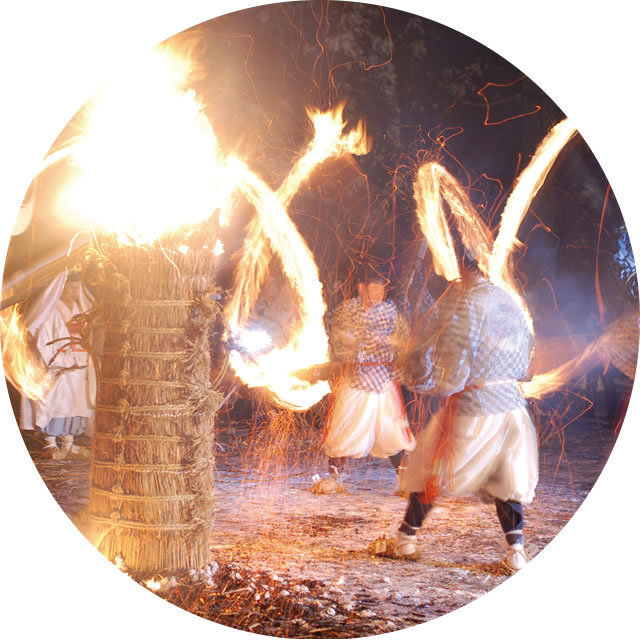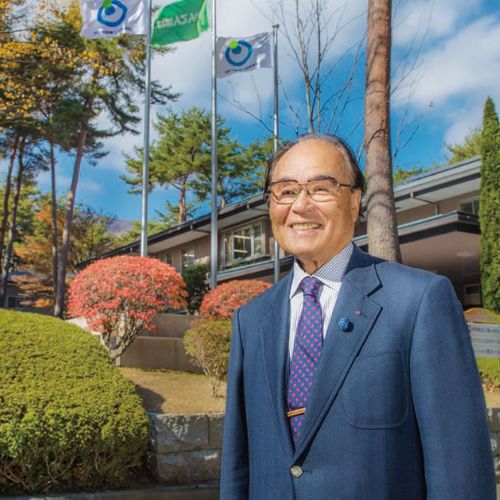The Sacred Mountains of Dewa—Mt. Haguro, Mt. Gassan, and Mt. Yudono—in Yamagata Prefecture in Japan’s Tohoku region are highly revered in Shugendo, the practice of mountain asceticism unique to Japan. Traversing these three peaks symbolizes the journey of being spiritually reborn, with Mt. Haguro representing the present, Mt. Gassan the past, and Mt. Yudono the future. The Sacred Mountains of Dewa offer enormous appeal both as a place to encounter spiritual rebirth and as a place to come into contact with the mountain asceticism that has been part of Japanese nature worship from ancient times.
This is Japan
Yamagata
The Sacred Mountains of Dewa
Sites of Worship
On Mt. Haguro stands a five-story pagoda said to be built in the tenth century that is one of Japan's National Treasures. In the surroundings are colonnades of Japanese cedar trees 350 to 500 years old, with some reaching 1,000 years of age and 10 meters (33 feet) in circumference. The customary style of worship is to visit all three of the sacred mountains, beginning with Mt. Haguro. However, as Mt. Gassan and Mt. Yudono are closed off during the winter months, people often visit only Mt. Haguro to venerate the spirits of all three mountains.
Shugendo
Shugendo arose from Buddhism closely combined with ancient Japanese mountain worship that was rooted in the worship of nature. It aims at spiritual cleansing and the awakening of the forces within a person through strict ascetic practices performed while secluded in the mountains. Those who practice Shugendo are known as yamabushi, and by convention they enter the mountains wearing white garments to indicate their parting with secular society. Visitors to the Sacred Mountains of Dewa can experience an introduction to Shugendo through tours run primarily between June and October.
Festivals
A festival known as Shoreisai is held on Mt. Haguro beginning on the final day of the year and runs all throughout New Year’s Eve into New Year’s Day. Two Shugendo practitioners known as matsuhijiri, who have completed ascetic practices over a period of 100 days, lead the festival. The festival has its origin in ancient times, when fires were lit to drive out harmful insects that were damaging the village’s farm products. During the festival, effigies of these harmful insects in the form of giant torches are burned down to pray for a rich harvest and ward off bad fortune in the new year. The flames burning atop the snow create an otherworldly spectacle at night.
© Haguro Tourist Association
































